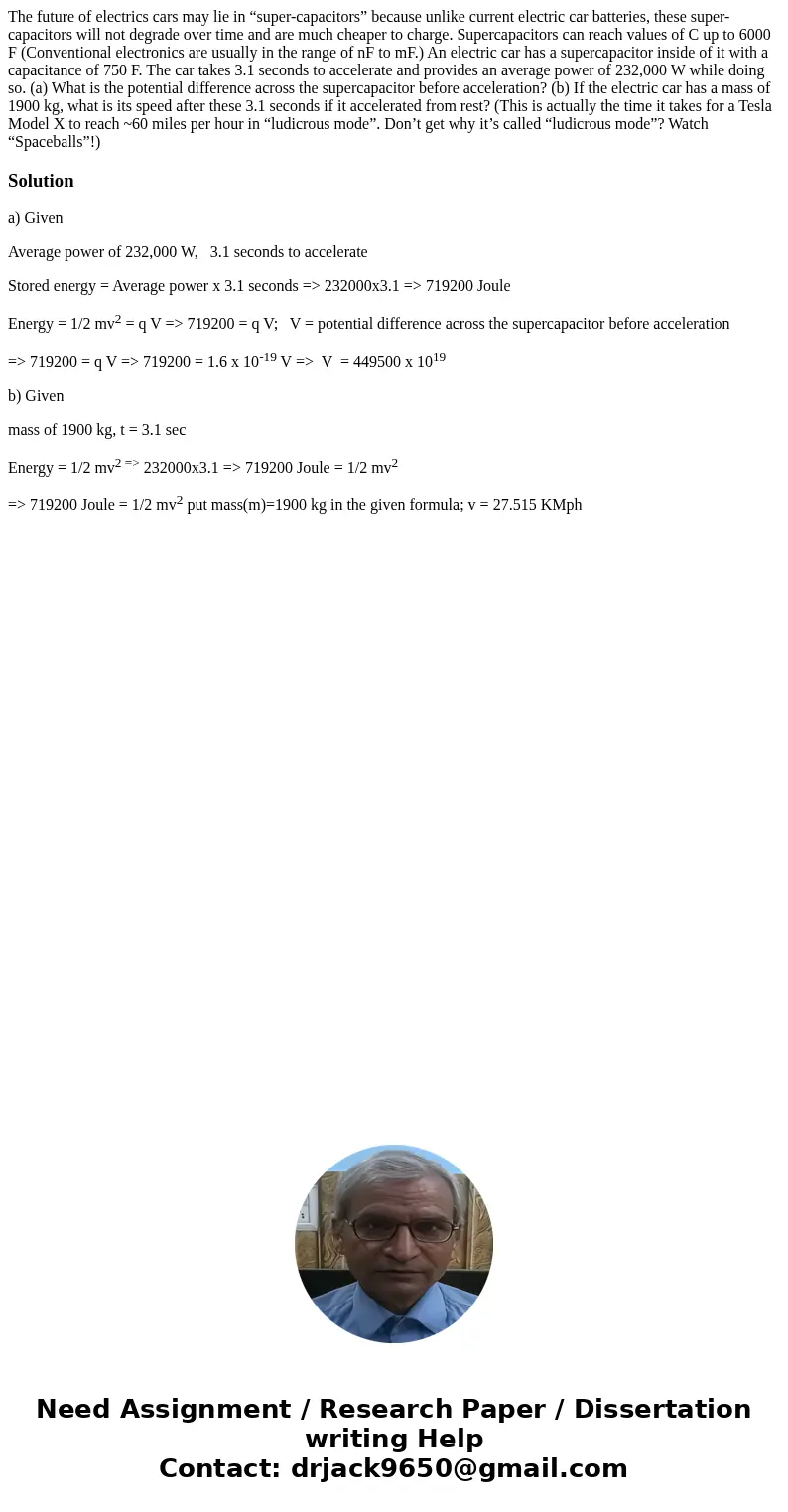The future of electrics cars may lie in supercapacitors beca
The future of electrics cars may lie in “super-capacitors” because unlike current electric car batteries, these super-capacitors will not degrade over time and are much cheaper to charge. Supercapacitors can reach values of C up to 6000 F (Conventional electronics are usually in the range of nF to mF.) An electric car has a supercapacitor inside of it with a capacitance of 750 F. The car takes 3.1 seconds to accelerate and provides an average power of 232,000 W while doing so. (a) What is the potential difference across the supercapacitor before acceleration? (b) If the electric car has a mass of 1900 kg, what is its speed after these 3.1 seconds if it accelerated from rest? (This is actually the time it takes for a Tesla Model X to reach ~60 miles per hour in “ludicrous mode”. Don’t get why it’s called “ludicrous mode”? Watch “Spaceballs”!)
Solution
a) Given
Average power of 232,000 W, 3.1 seconds to accelerate
Stored energy = Average power x 3.1 seconds => 232000x3.1 => 719200 Joule
Energy = 1/2 mv2 = q V => 719200 = q V; V = potential difference across the supercapacitor before acceleration
=> 719200 = q V => 719200 = 1.6 x 10-19 V => V = 449500 x 1019
b) Given
mass of 1900 kg, t = 3.1 sec
Energy = 1/2 mv2 => 232000x3.1 => 719200 Joule = 1/2 mv2
=> 719200 Joule = 1/2 mv2 put mass(m)=1900 kg in the given formula; v = 27.515 KMph

 Homework Sourse
Homework Sourse